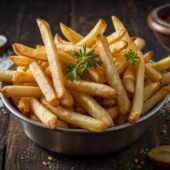A trip in smells.
One of the things I find pleasant about modern societal tones is the increasing incorporation of eastern cuisine in the western diet. Sure, basic, Americanized Chinese food has been a thing for decades, but authentic Chinese dishes, as well as Japanese, Vietnamese, Korean, and Thai have really helped to expand my palette in a variety of interesting ways.
Thai food is especially interesting. Thai cooking tends to incorporate a greater emphasis on spicy, aromatic components, making it a feast for both your mouth and your nose. There’s lots of places to get Thai food here in the States these days, but if you want the authentic experience, you gotta go straight to the source.
Thai food, in its natural form, falls into four broad categories: tom, yam, tam, and gaeng, which refer to boiled foods, spicy salads, pounded foods, and curries, respectively. Even within those categories, different parts of Thailand tend to specialize in different dishes and draw inspiration from whatever’s nearby.

Central Thai food incorporates themes from Chinese cuisine, and often come with Jasmine rice. The northern section draws more inspiration from the neighboring country of Laos, and replaces the Jasmine rice with glutinous rice. Southern Thailand shares staples with Malaysia, and specialize in some pretty delicious curries with non-glutinous rice.
One of my favorite dishes, larb, hails from northern Thailand and originated in Laos. Larb (pronounced “laab”) is a meat salad composed of a variety of fresh meats mixed with herbs and ground rice and flavored with fish sauce. Thai-style larb forgoes the fish sauce, instead flavoring the dish with a variety of spices like cumin, star anise, and cloves. You can eat it raw, but it’s also good stir-fried.
So if you’re hungry (and after writing this, I sure am), you can’t pick a much better culinary destination than Thailand. I just hope you’ve got a good spice tolerance.




